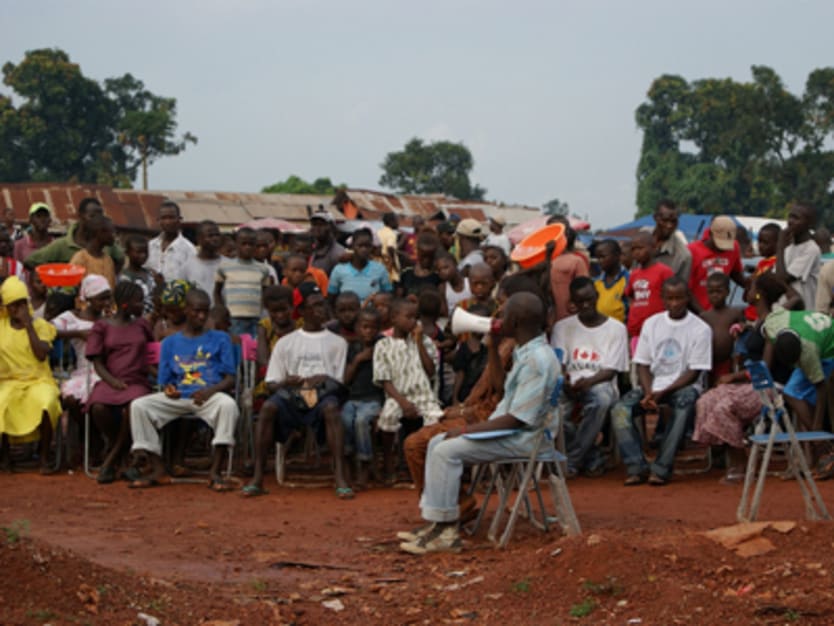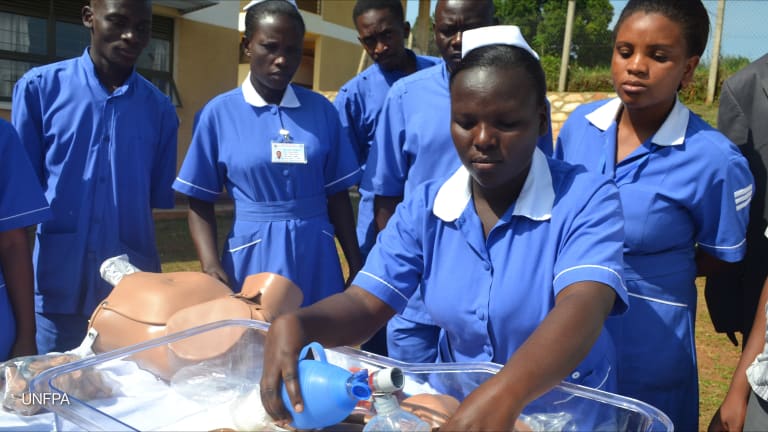
Given this week’s headlines — upheaval in Egypt, continued violence in Darfur, a tragic school shooting in northern Nigeria, the EU’s deal to limit the use of crop-based biofuels and seemingly neverending discord over the budget in Washington and elsewhere — it’s easy to forget that today is meant to remind us of a creeping challenge facing this planet: population growth.
This year, on World Population Day, the U.N. Population Fund and others are spotlighting the dangers of adolescent pregnancy and the need to ensure girls have access to reproductive health services and commodities.
But getting there can be tough, and the aid community will have a hard time getting closer to this goal if governments refuse to acknowledge that child marriage is the “biggest driver” of adolescent pregnancy, UNFPA external relations chief Dianne Stewart told Devex.
More than 14 million girls aged 15-19 continue to get married each year, and often give birth soon after. Many of these girls lose the chance for an education to develop skills and thus prove their worth to their communities and families, who may often see them as an economic burden.
Child marriage is a key driver of adolescent pregnancy, Stewart noted, but many governments “don’t like to accept that it happens in their own countries.”
Stewart suggested a three-step solution: First, compile evidence on the number of girls who continue to get married at a very young age. Second, push governments to put legal frameworks in place, such as raising the minimum age for marriage. (Stewart argues the minimum of age of consent and minimum age for marriage should be “correlated.”)
Third is implementation, which is the tricky part. And as so often, political leadership and resources are among the main challenges.
What role should the global development community play? Long-term investment is needed, Stewart noted, adding that conditional aid “wouldn’t be as effective for girls in the long run.”
“Part of the investment in these girls is to work with these governments to change it, so if you make that a condition, you wouldn’t be able to work with the governments that you need to work with to make the changes you need to make,” she argued.
There are a number of ways for the international development community to help tackle the complex challenge of adolescent pregnancy, from family planning programs to education initiatives and advocacy work. UNFPA is eager to provide guidance, Stewart suggested.
“We haven’t actually pulled it all together into one budget, but I think we are going to try to at least cost some programs as a package,” she said. “We wouldn’t have an overall total, but we would eventually say, look, if you spend X amount on each adolescent girl, this is what you can achieve.”
Making sure adolescent pregnancy stays atop the global development agenda will be crucial. That’s why UNFPA and its allies have praised a high-level panel appointed by United Nations Secretary-General Ban Ki-moon for including “ending child marriage” as an indicator for the empowerment of women and girls in their recommendations on a post-2015 global development agenda, unveiled six weeks ago.
But UNFPA and its allies know that the process is evolving, and they need to keep on the heat. That’s why UNFPA plans to release a number of reports in the coming months, including one on ICPD Beyond 2014 which, Stewart underscored, will show the “unfinished agenda” for women and girls.
“If we could change the trajectory of the 67 million adolescent girls of the next 20 years, we can completely redefine the future of the world,” she said.
Ensuring adolescents’ access to reproductive health services and commodities may be challenging, but Stewart and a host of others believe it is a fundamental human right and something the international community can help to deliver.
Read last week’s Development Buzz.








